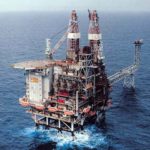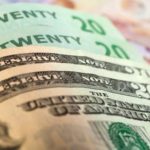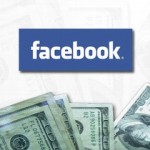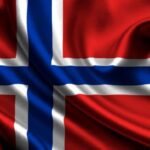Gold prices rose during early trade in Europe today, after US President Obama said he had authorized airstrikes on Islamist militants in Iraq, spurring safe haven bids. Tensions between the West and Russia over Ukraine were also in focus, with growing suspicions of a Russian invasion.
Gold futures for delivery in December were up 0.51% to trade at $1 319.2 per troy ounce at 8:37 GMT on the COMEX in New York. Prices ranged from $1 310.0 to a two-week high of $1 324.3 per troy ounce. The contract added 0.33% yesterday and is headed for a ~2.5% weekly increase.
“There is some panic in the equity markets after the Iraq announcement, and that, along with the Ukraine crisis is bringing safe-haven demand for gold,” Peter Fung, head of dealing at Wing Fung Precious Metals in Hong Kong, said for Reuters. “Gold could climb quickly up to $1,325 an ounce.”
Silver for September were up 0.38% to trade at $20.065 per troy ounce, while palladium was up 0.44% at $859.80. October platinum was up 0.23% at $1 484.95.
Iraq was again in the spotlights of financial markets, after US President Barack Obama announced the US will be carrying out air strikes on militants of the Islamic State (IS), should they threaten its personnel in autonomous Kurdistan in the north of the country. President Obama dismissed the possibility of sending in ground forces, saying he would not let the US be dragged in another war in Iraq.
Also, President Obama said the US would strike on the Islamists if they march on Baghdad, and if they maintain their blockade of Mount Sinjar, where tens of thousands of civilians fled to from the IS. In addition to military support, Mr Obama said the US would provide humanitarian air drops to the civilians, who were left without food, water or any sanitation. 40 children were already reported to have died in the mountain.
“We have the unique capabilities to help avert a massacre, [and] I believe the United States of America cannot turn a blind eye,” Obama said. “We can act, carefully and responsibly to prevent a potential act of genocide.”
The move comes as the international community was growing more concerned with the security of civilians in Iraq, with UN Secretary-General Ban Ki-moon saying he was “deeply appalled”, and Pope Francis urging the international community to do more to protect innocents.
“It’s a catastrophe, a tragic situation: tens of thousands of terrified people are being displaced as we speak,” said Joseph Thomas, the Chaldean archbishop of the northern city of Kirkuk.
Russian sanctions
Russia responded to Western sanction by introducing its own limitations to foreign trade on Thursday. Russian Prime Minister Dmitry Medvedev said Russia bans the import of meat, fish, dairy products, fruit and vegetables from the US, EU, Canada, Australia and Norway for a period of 1 year.
The counter-sanctions were ordered by Russian President Vladimir Putin on Wednesday and is a retaliation to the most-recent and toughest yet Western measures, which targeted the Russian sectors of the defense, energy, high-tech and finance.
The move comes as NATO warned of a possible Russian incursion in Ukraine, in light of fresh battle-ready troops massing near the border.
Nato chief Anders Fogh Rasmussen said Ukraine’s freedom and future were “under attack,” promising support against Russian “aggression”, the BBC reported. Russia “should not use peace-keeping as an excuse for war-making.”
Meanwhile fighting rages in eastern Ukraine, with heavy shelling reported in the rebel bastion of Donetsk, while a Ukrainian military aircraft was shot down. Several civilians were also reported killed.
ECB rates
The European Central Bank (ECB) kept rates unchanged after its meeting yesterday, with benchmark lending interest at 0.25% and deposit rate at -0.10%. A negative deposit rate means that the ECB charges commercial banks for keeping their money in deposit, and is a policy measure aimed at spurring lending, and liven overall economic activities. The decision was largely expected, though the euro did log slightly lower value after the announcement and the following speech.
The euro has a very strong opposite correlation with the US dollar, meaning a weakness for the euro translates into strengthening for the dollar, which pressures the dollar-denominated gold.
In the press conference following the meeting, ECB President Mario Draghi shared the bank’s view, that inflation is still low, but seen stable through 2014 and rising in 2015 and 2016. He added that the ECB was ready to implement QE or other non-conventional, should the mid-term inflation expectations turn downwards, as the real economy was still in focus. Mr Draghi also said that the bank was closely monitoring the geopolitical risks, including the crisis in Ukraine and developments in Iraq, Syria, Libya and Gaza, weighing their potential impact on the economy of the EU.
The ECB meeting comes amid worsening economic figures for the Eurozone. Germany reported contracting industrial production earlier on Thursday, after a surprise drop in factory orders was logged on Wednesday. Italy was reported back into recession, while services sector readings for the Bloc fell below expectations. Just last week the Eurozone reported declining CPI, which was logged at 0.4%, well below ECB’s 2.0% target.
Last week the US central bank, the Federal Reserve, held its policy meeting, deciding to keep on track with reducing monthly government spending on stimulus, while maintaining the 0.25% base interest rate. The US economy is widely seen as recovering well, in contrast to the EU, driving a stronger dollar, which pressures gold.
Dollar, stocks
The US Dollar Index, which measures the strength of the greenback, added 0.12% yesterday, on the back of a fall for the euro, but dropped some 0.17% by 8:22 GMT today, due to safe haven pressure. Meanwhile, US stocks returned to the downside on Thursday, with all three major indices losing 0.4% to 0.5%.
Elsewhere, assets at the SPDR Gold Trust remained unchanged at the lowest level in a month on Thursday, after losing more than 4 tons this week.
Technical support and resistance levels
According to Binary Tribune’s daily analysis, gold December future’s central pivot point on the COMEX stands at $1 310.6. In case futures manage to breach the first resistance level at $1 318.3, the contract will probably continue up to test $1 324.0. In case the second key resistance is broken, the precious metal will likely attempt to advance to $1 331.7.
If the contract manages to breach the first key support at $1 304.9, it will probably continue to slide and test $1 297.2. With this second key support broken, the movement to the downside may extend to $1 291.5.





